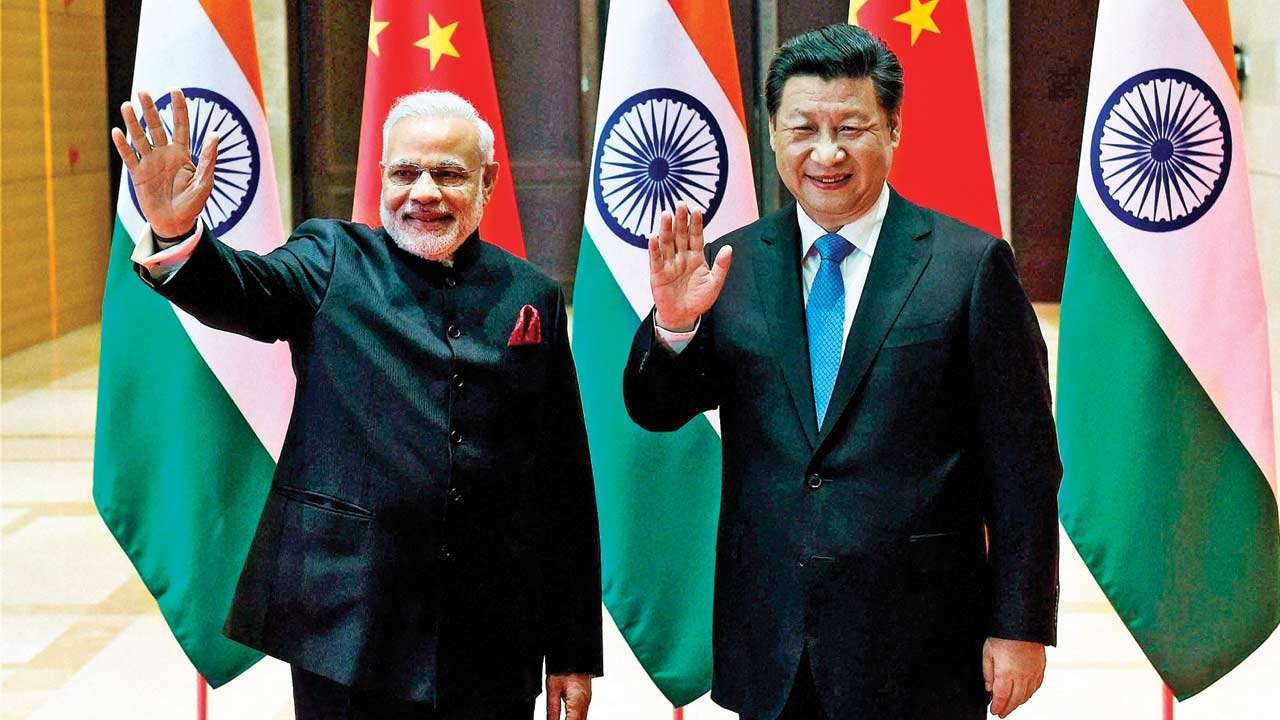
In November, India and China concluded the 10th round of the Working Mechanism for Consultation and Coordination on India-China Border Affairs (WMCC). Both sides reviewed the situation sector wise and agreed that maintenance of peace and tranquillity in the border areas is an important prerequisite for the sustained growth of bilateral relations. The two sides also exchanged views on further confidence-building measures and the strengthening of military-to-military contacts. Established in 2012, WMCC is an institutional mechanism for consultation and coordination for the maintenance of peace and tranquillity in the India-China border as well as to exchange views on strengthening communication and cooperation, including between their border security personnel.
India and China share a border of 3,488 km. Though the Line of Actual Control (LAC) can be said to be the effective border between India and China, yet each side’s perceptions of the same differ giving rise to regular transgressions by the PLA.
In an effort to resolve the dispute, the two sides initiated official level talks in 1981. There were eight rounds of official border talks from 1981 to1987. India and China established a Joint Working Groups (JWG) in 1988 to find a solution to the border disagreement. The outcome of the JWG meetings was slow. In 2003, during AB Vajpayee’s visit to China, it was repackaged and rechristened as the Special Representatives talks. The Special Representatives were appointed from both the sides. The first round of Special Representatives talks was held between Brajesh Mishra and Dai Bingguo. Until now there have been 19 rounds of talks. The 20th Special Representative-level talks are scheduled later this month.
Although India-China began discussions to resolve the border differences in 1980, the process got an impetus only after the two countries agreed to hold talks with designated Special Representatives.
Overall, 2017 has been quite eventful for the India-China border issue. The former Chinese Special Representative on the boundary talks with India, Dai Bingguo had given an interview to the China-India Dialogue magazine (published from China). He said, “If the Indian side takes care of China’s concern in the eastern sector of the border, the Chinese side will respond accordingly and address India’s concern elsewhere.” The statement is the reiteration of the Chinese position on Tawang. India has made it clear that there will be no major adjustments in the eastern sector and there can be no swap in areas consisting of the settled population. Notably, Dai Bingguo has been involved in the boundary talks for long. The timing and relevance of the statement are dubious.
On May 14-15, 2017, China organised the Belt and Road Forum for International Cooperation in Beijing. India did not send any representative to the Forum and has not joined the Belt and Road Initiative on the issue of sovereignty especially with reference to the China-Pakistan Economic Corridor that passes through the Pakistan-occupied Kashmir. India has reservation over the orientation and nature of the development of the Belt and Road Initiative. Notably, in order to convince India, the Chinese Ambassador in India has twice mentioned that China can consider renaming the China Pakistan Economic Corridor if India joins the Belt and Road Initiative. The overarching motive behind the proposition appears to be strategic.
In June, there was a 73-day stand-off between India and China at the Doklam area. It was resolved by “expeditious disengagement of border personnel at the face-off site.” Perhaps, both India and China, the world’s largest emerging economies have realised that they cannot afford to be involved in a prolonged confrontation.
Additionally, China has often objected to Indian leaders visiting the state of Arunachal Pradesh. Recently, Indian Defence Minister and Indian President visited Arunachal Pradesh. Succinctly, the Indian President has mentioned that if the Northeast is the crown of the country, Arunachal Pradesh is the “jewel in the crown”.
Clearly, the strategic distrust between the two sides is widening. On November 2, 2017, China once again blocked the United Nations Security Council Resolution by the US, France, and Britain to list Masood Azhar, chief of Pakistan-based Jaish-e-Mohammed (JeM) militant group, as a “global terrorist”. China is not supporting India’s bid to enter Nuclear Supplier’s Group.
On the sidelines of the Russia-India-China meeting held in New Delhi, Chinese Foreign Minister Wang Yi met Indian External Affairs Minister Sushma Swaraj and stressed the need for continuing “strategic communication” between both the sides. Wang Yi’s visit is particularly important as it was the first high-profile visit after the Doklam and the 19th National Congress of the Communist Party of China. Yang Jiechi, the present Special Representative from the Chinese side, has been promoted to the 25 member Politburo. There is a probability that Wang Yi may be the next Special Representative from the Chinese side from next year onwards.
After several years of discussion, there is no mutually defined frontline i.e, the line of Actual Control. Both the countries continue to face the challenging task of defining and demarcating their border. The Special Representatives have played a vital role in resolving the Doklam stand-off.
The 20th round will be the first since the 73-day Doklam standoff between the two sides. The ‘expeditious disengagement’ is a positive step in the bilateral relations and has set a good template for future. Against this background, the hopes for the 20th round of Special Representative Talks are high. A movement towards delineating the LAC would be a positive outcome of the talks as it is unlikely that boundary dispute will be resolved soon.
The author is senior research associate, Vivekananda International Foundation